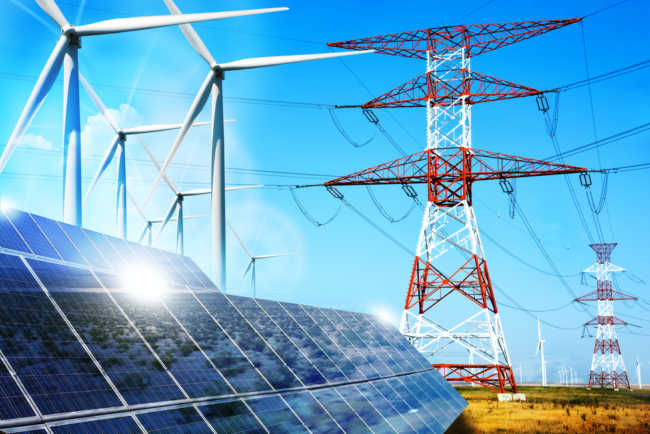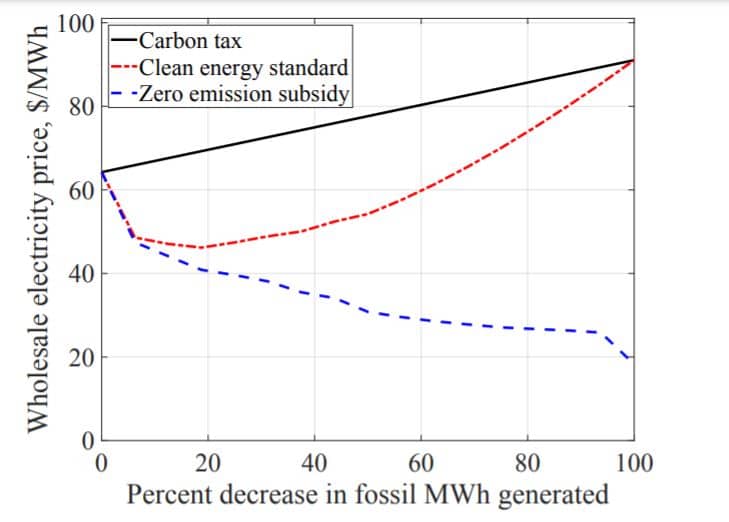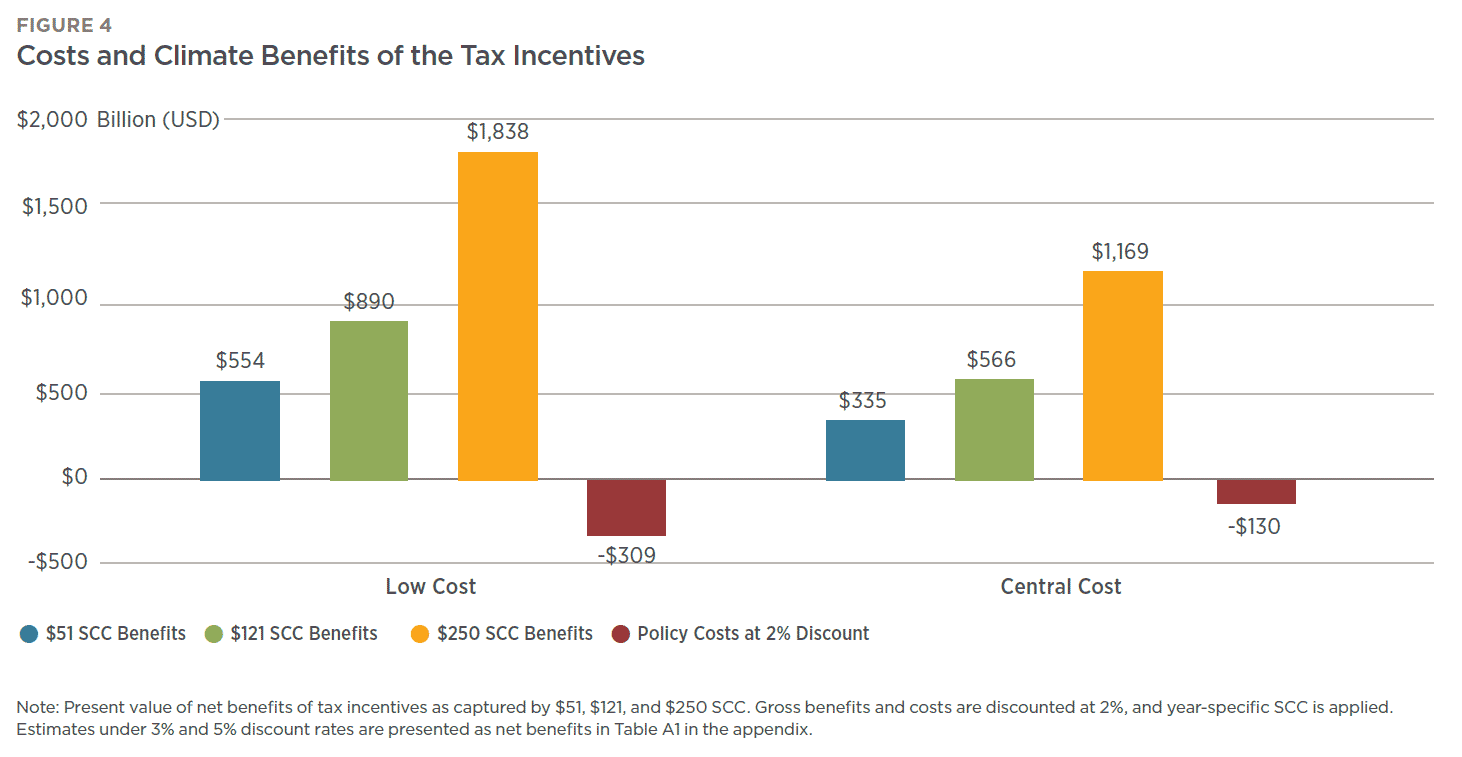The benefits of clean energy tax credits outweigh the efficiency gains of carbon pricing according to a study of popular climate policies.
Many believe that putting a price on carbon is the most efficient way to cut emissions from the electricity generation or power sector. Pricing carbon emissions with a tax or with a cap-and-trade program is often considered the “first best policy”.
Lawmakers have to consider a couple of factors when deciding which climate policy approach to choose. But policymakers in the U.S. have started to focus on clean energy tax credits.
Policy Options for Decarbonizing the Power Sector
1. Carbon pricing
This approach involves two options: carbon tax and cap-and-trade.
A carbon tax, also known as GHG emissions tax, mandates power sector emitters to pay for their emissions with a certain amount.
Under a cap-and-trade system, firms trade permits to stay within a set carbon budget. There’s a set limit on carbon emissions they are allowed over a long period of time.
For every tonne of carbon emitted, the entity must get a permit or allowance to cover it. These permits are then traded, often as carbon credits, either in government auctions or in private carbon markets.
A popular example of a cap-and-trade is the European Union Emissions Trading Scheme, there are numerous other programs in different jurisdictions.
2. Subsidizing clean energy (Clean energy tax credits)
Under this approach are also two options for subsidy. One is the Zero-emission Energy Subsidies (ZES) which pay producers a fixed amount for a unit of electricity generated from clean or zero-emissions sources.
An example of this is the production tax credit for wind power which is different from solar power generation. But both subsidies are often done via tax credits.
The second option is Zero-emission Capital Subsidies (ZCS). ZCS subsidizes the creation of capacity and not the production of electricity from clean sources. A perfect example is investment tax credits for solar power generation.
Why are clean energy tax credits more effective?
Ryan Kellogg and co-author Severin Borenstein examined how those policies can lead to various GHG emissions.
They pointed out that pricing carbon penalizes fossil fuels like coal that is the dirtiest source. They then consider the impact of policies on electricity prices and government revenue.
Carbon pricing results in the highest electricity prices for consumers and generates government revenue. On the other hand, prices are lower under clean electricity tax credits but it calls for government spending.
In general, the high prices under carbon pricing seem to be efficient as they give consumers incentives to conserve power. While low prices under clean energy tax can result in over-consumption.
-
But, the authors claimed that this point of view is unlikely to hold in bringing the power sector to zero emissions.
That’s because utilities mark up the retail price of electricity above the wholesale price. This is to cover the fixed costs associated with electricity distribution and utility programs like subsidies for solar and energy efficiency.
In the US, those markups can be 2x more than the cost of producing electricity itself. In a sense, if the power or electricity generation sector decarbonizes via a carbon price, it leaves the consumers to pay much higher prices.
This over-pricing of electricity is problematic if decarbonizing other sectors like transportation and building calls for electrification.
The chart above shows that the ZES policy leads to electricity prices that are lower than a carbon tax. The same holds true in the case of the clean energy standard. That’s because the ZES enables zero-emission sources to rival fossil units.
Also, ZES wholesale prices are below the social marginal cost of producing electricity each year. It also includes the final year when emissions are eliminated so that private and social marginal costs are identical. This is better at aligning retail power prices with social costs.
The Climate Benefits of Clean Energy Tax Credits
A similar study on a specific example of clean energy tax, the “Build Back Better”, found that its benefits are about 3x-4x greater than its costs. The graph below illustrates the cost and benefits of this climate policy. SCC means social cost of carbon.
Across a wide range of assumptions, the authors find that the projected benefits of the tax credits go above the costs. Plus, on a cost/tonne of CO2 basis, they tend to deliver greater emission reductions than other climate policies in place.
As per Borenstein,
“We found that the standard economic logic of carbon pricing doesn’t fit the electricity sector very well, due to the other pricing distortions in the industry… Carbon pricing is still a powerful tool, but this shows it is important to think through the full context in which we are doing GHG regulation.”




